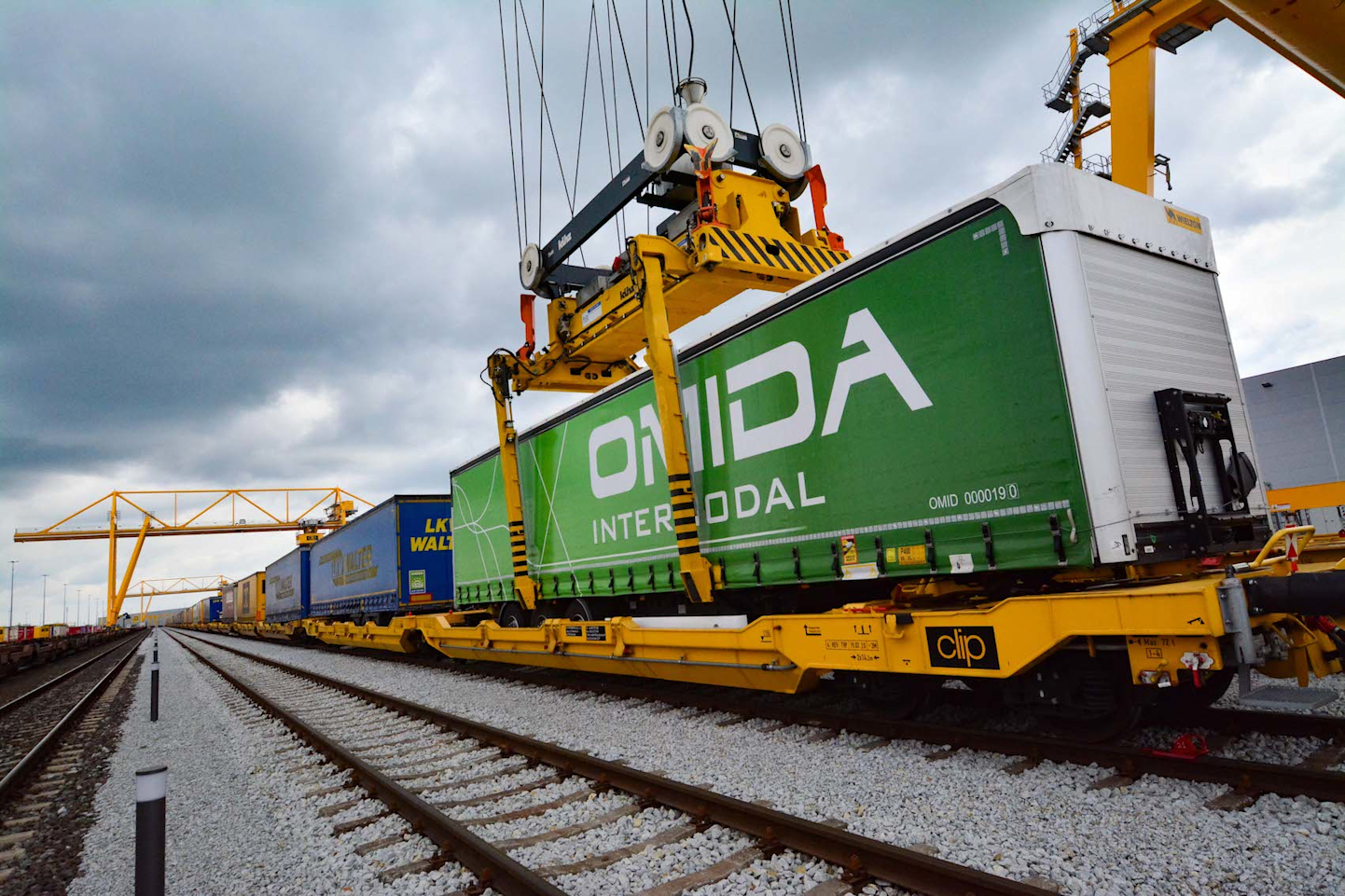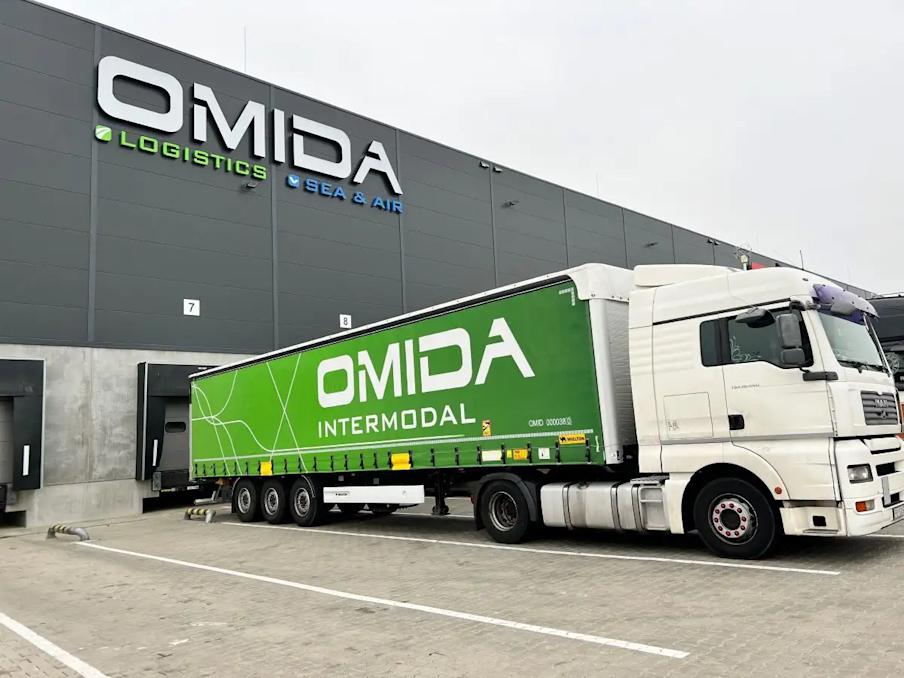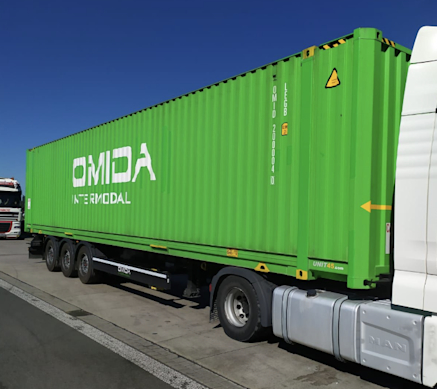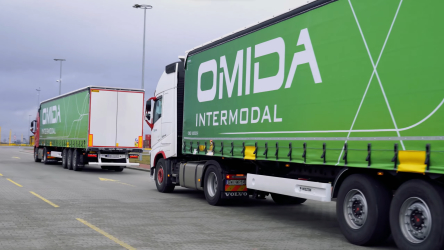As part of the European Union's ambitious green transformation plan, intermodal transport plays a key role in achieving sustainable and efficient logistics solutions. The “Fit for 55” package aims to align EU policies with climate goals and reduce greenhouse gas emissions by at least 55% by 2030. Let's analyze what the “FIT FOR 55” package is and how intermodal transport contributes to transport transformation.
What is the "Ready for 55" package?
The “Fit for 55” package is a set of legislative proposals that have been proposed by the European Union as part of its Green Transformation Plan, which aims to achieve a reduction in greenhouse gas emissions of at least 55% by 2030. The package is intended to adapt EU legislation and introduce new initiatives to bring EU policy in line with the climate targets that have been set by the European Council and the European Parliament.

What are the assumptions of Fit for 55?
The “Fit for 55” package includes various proposals to amend existing regulations and introduce new regulations in key areas. Here are some of the main elements of the package:
1. The EU Emissions Trading System (EU ETS): The package envisions reforming this system, which covers carbon emissions for energy-intensive industries and power generation. The new rules aim to make the system more ambitious and effective in reducing emissions.
2. Transport: The “Ready for 55” package proposes measures to reduce greenhouse gas emissions from the transport sector, including covering emissions from maritime transport and tightening energy efficiency requirements for vehicles.
3. Renewable energy: The package includes proposals to increase the share of energy from renewable sources in the overall energy mix. The current renewable energy target is expected to be raised from 32% to at least 40% by 2030.
4. Energy efficiency: The package proposes measures to increase energy efficiency in various sectors, such as construction, industry and services. Among other things, it is envisaged to tighten the obligation for annual energy savings and introduce measures to reduce energy consumption in public sector buildings.
5. Other areas: The “Ready for 55” package also addresses other areas, such as the forestry sector, reducing methane emissions, developing the market for hydrogen and decarbonized gas, and introducing stricter regulations for the energy performance of buildings.
How is intermodal transport contributing to this transformational change?
-
Strengthening modal integration: Intermodal transport brings together different modes of transport, such as rail, road and shipping, to optimize efficiency and reduce environmental impact. By harmoniously combining different modes, it enables the efficient movement of goods while minimizing carbon emissions and road congestion.
-
Shifting to sustainable modes of transport: Intermodal transport promotes the use of greener modes of transport, such as rail and waterways, which have a smaller carbon footprint compared to traditional road transport. Shifting cargo from trucks to trains or ships over long distances significantly reduces greenhouse gas emissions and contributes to cleaner air and reduced traffic congestion.
-
Utilization of infrastructure: The “Ready for 55” package emphasizes the development of infrastructure for alternative fuels, including the expansion of charging and refueling stations for electric and low-emission vehicles. Investments in infrastructure support the harmonious integration of intermodal transport, enabling the use of sustainable fuels and technologies across all modes of transport.
-
Ensuring efficient operations: Intermodal transport optimizes the logistics chain by streamlining processes, reducing transport time and minimizing empty container movements. By leveraging innovative technologies and digital platforms, such as real-time tracking and intelligent route planning, intermodal transport logistics operators increase operational efficiency and resource utilization, leading to further reductions in greenhouse gas emissions.
-
Compatibility with EU initiatives: Intermodal transport fits perfectly with the goals of the “Ready for 55” package, which seeks to achieve sustainable transport and reduce greenhouse gas emissions. For example, the reform of the EU Emissions Trading System (EU ETS) promotes emission reductions in the maritime and air transport sectors, creating conditions for intermodal logistics solutions.
FIT FOR 55 package and intermodal transport.
Intermodal transport plays an important role in the EU's green transition, providing sustainable and efficient logistics solutions. By integrating different modes of transport, shifting to greener options, utilizing infrastructure, ensuring efficient operations and complying with EU initiatives, intermodal transport contributes to reducing greenhouse gas emissions and building a more sustainable future. As an experienced transport company, Omida VLS is committed to embracing intermodal solutions and working with our partners to jointly accelerate the transformation to a greener and more resilient transport sector in the EU.
Intermodal transport is one type of combined transport. The use of intermodal transport lowers CO2 emissions and reduces energy consumption per unit of cargo. Read more about how intermodal transport affects the global ecology.
In conclusion, the Ready for 55 Package is an important step for the European Union in achieving its climate goals and building a more sustainable economy. The adoption and implementation of these legislative proposals aims to accelerate the ecological transition and reduce the impact of climate change.
By using intermodal transport, we are reducing CO2 emissions by up to 70%. For example, a train between Poznań and Barcelona means 75% savings in carbon dioxide emissions, 90% savings in nitrogen oxide emissions and 80% savings in dust emissions compared to car transport - 500 transports on this route equals about 900 tons less CO2.
Choose Intermodal Transport and gain an advantage in Business
We use a variety of transport methods, including road, sea and rail. One unit many possibilities!
Reefer intermodal container transport on the Poland-Italy route!
Good news coming straight from Poland to Italy! Omida VLS' Intermodal division has just sent the first transport by reefer intermodal container on the Poland-Italy route. 🚛❄️
▶ As part of the project, Omida VLS will guarantee temperature-controlled delivery service for FMCG products in 2023.
▶ Later this year, we are planning a joint campaign to raise awareness and popularity of intermodal solutions that help reduce CO2 emissions. ♻
▶ Intermodal transport fits perfectly with the objectives of the “FIT FOR 55” project, which aims to reduce CO2 emissions in the EU by at least 55% by 2030. 🌍 By using intermodal trailers, we can contribute to achieving these ambitious goals.
Congratulations to the Intermodal Division, which has consistently increased the reach of the services offered by Omida VLS. 👏

What targets has the European Union adopted for reducing greenhouse gases by 2030 and by 2050?
The European Union has adopted the following targets for greenhouse gas reductions under Fit For 55:
Target by 2030: The European Union has pledged to reduce greenhouse gas emissions by at least 55% compared to 1990 levels. This is a step toward achieving the medium- and long-term goal related to climate neutrality.
Target by 2050: The European Union has set itself a long-term goal of achieving climate neutrality by 2050. This means that by that time, greenhouse gas emissions will be balanced by removing carbon dioxide from the atmosphere or offsetting emissions through environmentally friendly measures.
These goals are aimed at reducing the negative effects of climate change, such as global warming, extreme weather events and loss of biodiversity. The European Union seeks to lead the fight against climate change by adopting ambitious measures and supporting the transition to a more sustainable and low-carbon economy.
What is the goal of Fit for 55?
The goal of Fit for 55 is to meet the European Union's greenhouse gas emission reduction and climate change targets. The package aims to reduce emissions by at least 55% by 2030 compared to pre-1990 levels and to achieve climate neutrality by 2050. Fit for 55 proposes a series of initiatives and regulations for the energy, international transport and domestic transport, construction and industry sectors to support the transition to a more sustainable and low-carbon economy.




